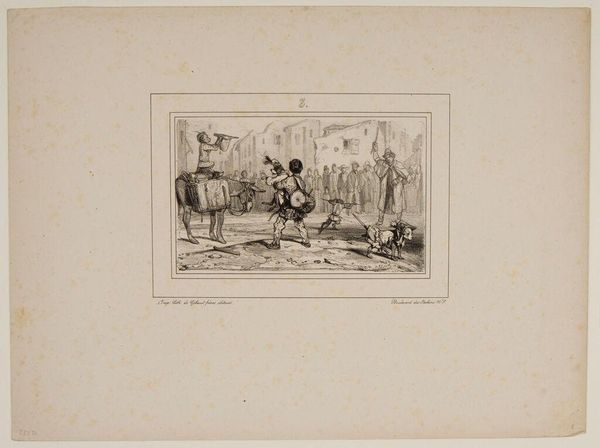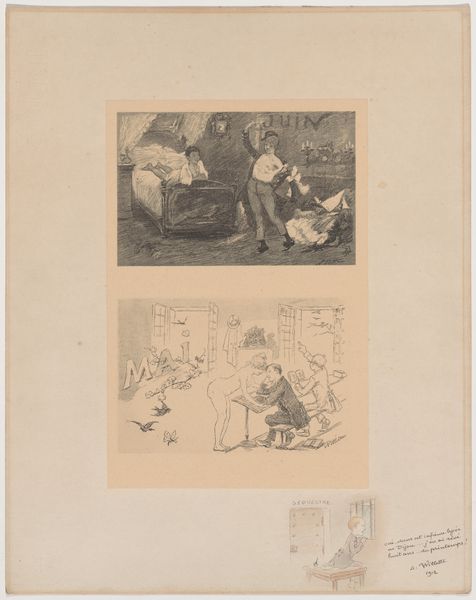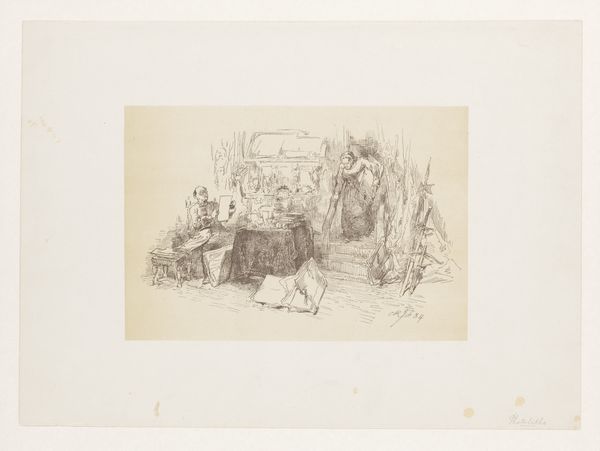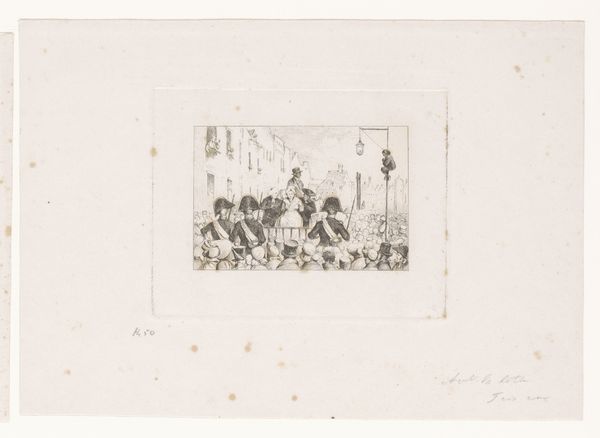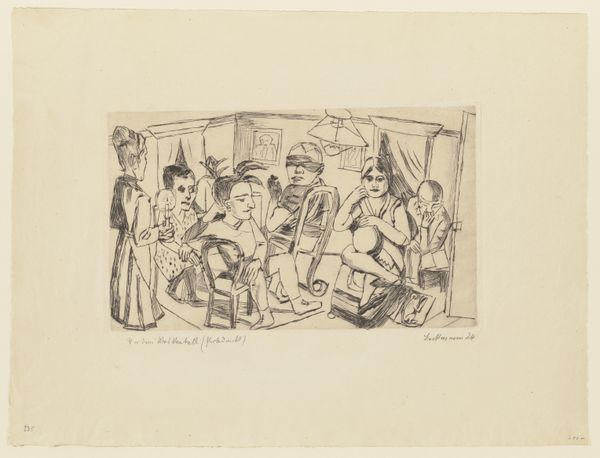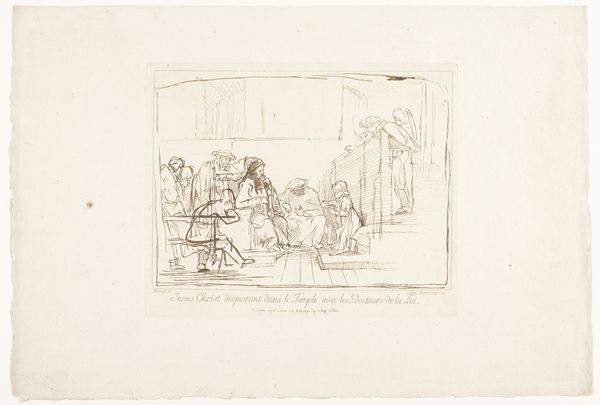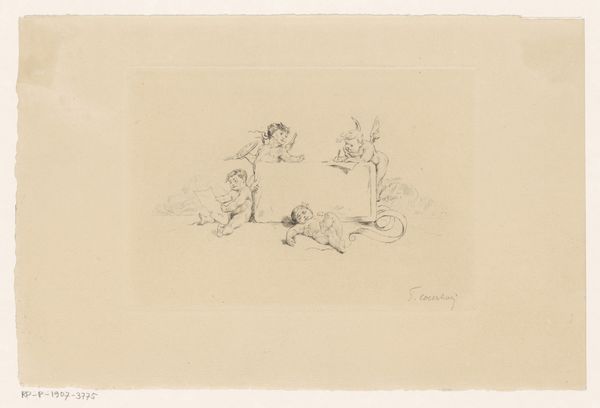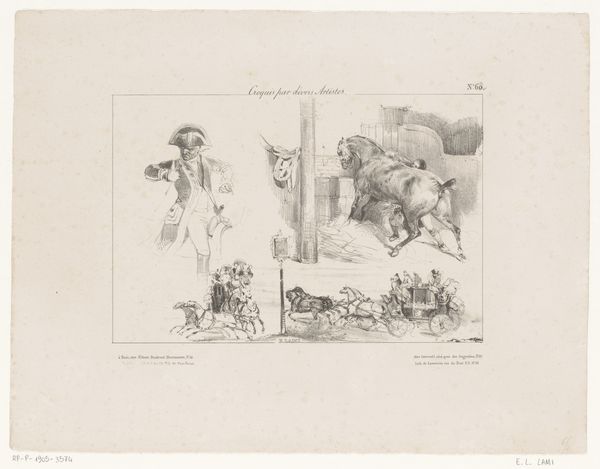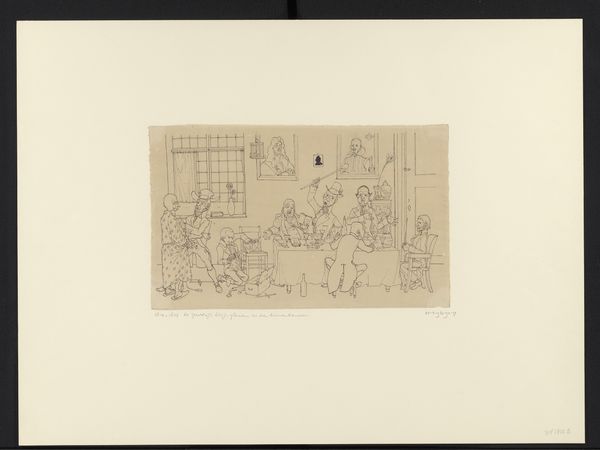
print, etching
#
narrative-art
#
ink paper printed
# print
#
etching
#
figuration
#
romanticism
#
genre-painting
Dimensions: height 249 mm, width 322 mm
Copyright: Rijks Museum: Open Domain
Curator: Let's consider this etching, "Straatartiesten met apen en honden," or "Street Performers with Monkeys and Dogs," made between 1830 and 1831 by Alexandre-Gabriel Decamps. What strikes you immediately? Editor: Well, the whole scene feels somewhat precarious, doesn’t it? A cacophony waiting to erupt, but contained within the neat lines of the print. There's an undeniable tension inherent to the portrayal of traveling street performers. It is ripe for discussion when observing this social class from a contemporary lens. Curator: Decamps was indeed fascinated by marginalized populations and depictions of everyday life. The print allows for wide distribution. Do you think the decision of making it a print influenced the reception of this portrayal? Editor: Absolutely. Making multiples democratized access, yes, but consider too how the printing press allowed such imagery to serve particular narratives. Look at the way the print aesthetic can romanticize poverty, exoticize, or even normalize societal inequalities. This depiction isn’t neutral; it’s constructed. Decamps invites us to ponder the role of social class at the time and even in our society today. How do we perform wealth? How do we perform the experience of those marginalized for our gain or pleasure? Curator: Decamps was moving towards a more Romantic approach at this time, as the influence of his trips to the East shifted how he captured light. Editor: And perhaps how he exoticized his subjects. Though the scene feels very European, there's a hint of "otherness" embedded in these performers. The monkey itself is symbolic, evoking colonial-era ideas of the “savage” mimicking humanity. It highlights that fine line between performance and perceived natural roles, and it raises all sorts of complicated questions about labor and exploitation. Curator: I see what you mean, but also recognize that Decamps depicts a real scene from his period. Considering that his artwork became progressively influenced by socio-political undertones and critique of institutions as he developed his career, it is relevant to wonder to which extent this piece belongs to his broader oeuvre. Editor: Which just emphasizes how intertwined art is with the historical context and political landscapes it both emerges from and reflects upon! This artwork is one example of so many. Curator: Yes, exactly. And by acknowledging the complicated questions art holds, hopefully our visitors have something to consider and analyze about themselves and today’s society as they move on to our next piece.
Comments
No comments
Be the first to comment and join the conversation on the ultimate creative platform.
